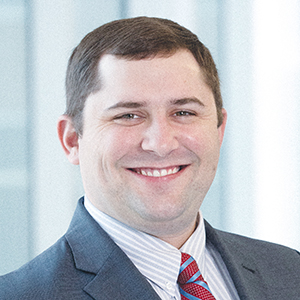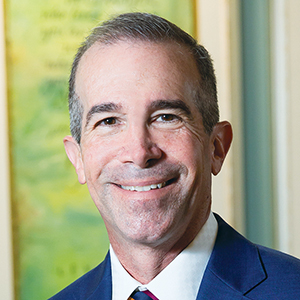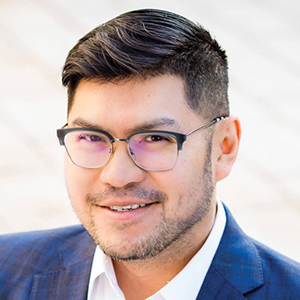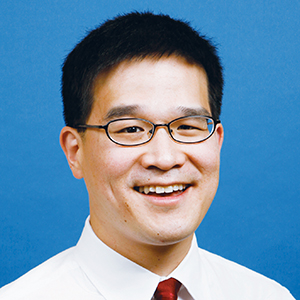
Ryan Cross would like the people behind budget proposals that call for drastic cuts to Medicaid to visit Our Lady of the Angels Hospital in Bogalusa, Louisiana.
The 66-bed hospital serves a community of about 10,000 and its rural surroundings with acute, emergency and specialty care that includes labor and delivery and pediatrics. The next closest hospital with similar services is 45 miles away. With 450 staffers, it is one of the largest employers in its parish. Of the patients the hospital treats, about 44% rely on Medicaid for coverage and another 40% on Medicare.

Cross is vice president of government relations for Our Lady of the Angels' parent, Franciscan Missionaries of Our Lady Health System. He said the cuts under consideration in Congress, which in the House's budget plan include slashing $880 billion over 10 years from Medicaid and other federally supported health programs, could force rural hospitals such as Our Lady of the Angels to scale back services and even close.
"I would invite anyone from some of these think tanks in Washington, D.C., to come to Bogalusa and take a walk through Our Lady of the Angels and see what impact the proposals that are being put forward would have on those people in that community," Cross said, referencing the conservative organizations that originally called for the cuts.
He pointed out that the closure of a rural hospital means more than a loss of access to medical care for residents. As is the case in Bogalusa, hospitals are often among the largest employers in communities across Louisiana and Mississippi, the states FMOLHS serves, Cross noted.
"And the direct and indirect economic impact of these policy ideas would be significant on each of those communities, whether it's the direct jobs that could be lost or the indirect impact from lack of investment, construction, tax base," he said.
Vital lifeline
Cross and other FMOLHS leaders are working with state health officials and other stakeholders in a strong health safety net to convince lawmakers of the need to maintain federal funding. They are not alone among health care leaders in predicting that slashing public health insurance programs could be devastating, for patients and for hospitals that largely serve low-income or rural populations.

Erik Wexler, president and CEO of Providence St. Joseph Health, is another leader from Catholic health care who is raising his voice on the issue. He joined members of the advocacy team from the system that spans seven states in meetings with members of Congress in mid-February to draw attention to the importance of the health care safety net.
"Millions of Americans depend on Medicaid for health care coverage, and it's a vital lifeline for our patients, especially in rural communities," Wexler said in a social media post about the visit to Washington.
CHA also is strongly advocating for Congress to maintain funding for health care coverage for the nation's most vulnerable. Sr. Mary Haddad, RSM, CHA president and CEO, directed a statement on the topic to Congress.
"Our health care system should be accessible to all, ensuring that every individual has the opportunity to thrive," Sr. Mary said. "Congress has a pivotal opportunity to advance policies that protect Medicaid, guarantee affordable coverage, protect essential safety net programs, strengthen rural hospitals and support long-term care services."
Sr. Mary went on to urge lawmakers "to champion policies rooted in compassion and dignity — because when we protect our most vulnerable, we create a healthier, stronger society for everyone."
Work requirements
Paulo Pontemayor, senior director of government relations, is a point person in CHA's advocacy efforts around Medicaid and the Children's Health Insurance Program. The two programs together cover about 80 million Americans.

Pontemayor said the proposals Congress has on the table go beyond decreasing federal funding. Another idea that appears likely to be enacted is to require states, which administer Medicaid and have some leeway in setting coverage rules, to add work requirements for enrollees.
Pontemayor said CHA opposes such requirements. When Arkansas briefly made Medicaid recipients show proof of work, many people lost coverage. Of those who fell off the rolls, many still qualified but the red tape that was part of the requirements proved too much for them, Pontemayor explained.
"We know that imposing additional burdens creates unnecessary hurdles for people to access the care that they need," he said.
Expansion at risk
Edwin Park, a research professor at the Center for Children and Families at the Georgetown University McCourt School of Public Policy, predicted that the Medicaid cuts and changes under review would be "hugely disruptive." Among the concerns he pointed to is that the proposals would effectively repeal the Medicaid expansion set up under the Affordable Care Act. A majority of states have enacted the expansion, providing coverage to 21 million Americans.

The federal government picks up 90% of the costs for patients covered by the expansion, a higher percentage than it pays for other Medicaid enrollees, Park noted. The budget proposals call for ending that higher match and leaving it to states to cover the cost gap. About a dozen states have rules in place to halt or reconsider the expansion if the federal match decreases.
"And then for the remaining states, they would be facing big cost shifts," Park said. "Maybe some of them would be able to sustain the expansion for a short period of time, but eventually, most, if not all, of these states would have to drop the expansion."
Park pointed out that for many low-income Americans the impact of the budget cuts won't stop at Medicaid. The people who rely on that program also often qualify for assistance from other federally supported programs such as Head Start and the Supplemental Nutritional Assistance Program, which are also in the crosshairs of Republicans who gained control of Congress in November.
"The election was largely about the economy and cost," Park said, "and this is certainly going to significantly raise out-of-pocket costs for low- and moderate-income families, not just in health care, but elsewhere, and just make it so much harder for kids and families to thrive."
Shared goal
Cross stressed that FMOLHS is in sync with the stated goal of the Trump administration to "Make America Healthy Again." He also said he and other leaders from the Baton Rouge, Louisiana-based system have been encouraged after meetings with members of Congress from Louisiana and Mississippi that those lawmakers support FMOLHS' Catholic mission to provide health care to all.
"We want to make America healthy again, and we want to do that by ensuring access for those patients that need us the most, not only to emergency lifesaving care, but also to primary care, specialty care and preventative care," Cross said. "And that will become exceptionally difficult in an environment where we're looking to cut hundreds of billions of dollars out of the Medicaid program."
